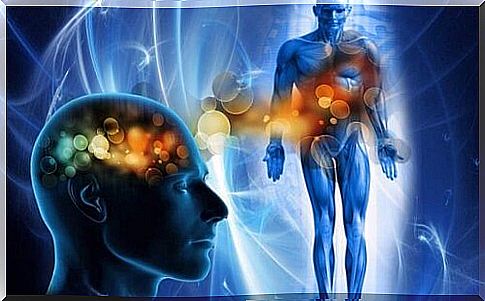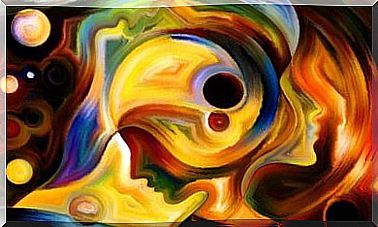Psychosomatic Disorders: When Your Mind Damages Your Body

Psychosomatic disorders are evidence of the power that the mind can have over the body. In a psychosomatic episode, the patient experiences a number of real physical symptoms related to an invisible disease. The condition does not exist organically. Rather, it is the result of mental conflicts or unresolved issues that eat at the patient from within.
It’s hard to believe a story about students who lose their sight before a school exam due to anxiety. Similarly, the story of a 60-year-old woman who loses mobility in her legs because she believes she has a tumor in her back is exaggerated and difficult to understand.
Is it real?
No matter how difficult it may be to believe it, there is ample evidence that such things happen every day. They happen all the time, and all over the world. As a result, neurologists and specialized psychologists have quickly learned to give those with psychosomatic disorders a place to talk about what is happening to them. If they say they are in pain, it is probably real, even if it does not come up in an MRI scan or a blood test.
It is important to validate the patient’s disorder. The same goes for patients with depression who say they have suicidal thoughts or a person with schizophrenia who has visions and hallucinations. These realities exist in their minds and they can be devastating. When our minds, traumatized and exposed to intense anxiety, take control, anything is possible.

Psychosomatic disorders – does everything really just happen in my head?
Psychosomatic disorders include all sets of symptoms that do not have a physical or organic correlation. They are pains and limitations that are simply the result of mental processes. Now we know what can make you think ” is it really just in my head?”
The truth is that the study of psychosomatic disorders is still full of mysteries. What we do know is that this spectrum of physical disorders associated with mental stress has a cerebral correlation: the hyperactivity of nervous impulses in the brain when they communicate with different areas of our bodies.
Who suffers?
- Another thing that the patients show is an excess of adrenaline in the blood, as well as some changed biological parameters. An example of this is an accelerated metabolism of glucose or amino acids.
- At the same time, researchers have shown that some people are more prone to psychosomatic disorders. Patients who live with a lot of anxiety or had a traumatic childhood due to abuse or neglect, tend to be more likely to experience this type of disorder.

There is something more important than understanding or not understanding what causes psychosomatic illnesses. Imagine a doctor explaining to the patient that what she is imagining is not real. That the chest pain is not a heart attack, that she did not lose her voice due to a problem with her vocal cords, or that the terrible headache she feels is not caused by a tumor. It’s okay to tell a patient what she does not have, but how can we help her heal what she actually has if everything is just in her head?
Problems generated by the mind
Psychosomatic disorders can affect any organ, system, tissue or structure. Their impact can be intense, so we should not underestimate the power of our psyche. In the same way, it is important to distinguish between a somatic symptom disorder and a psychosomatic disorder. In the former, there are no physical symptoms. In the latter, there is visible damage to the body (wounds, for example.) Here are examples of some of the diseases:
- The most classic examination of psychosomatic disorders is affecting the skin, such as eczema, hives, infections, acne, etc…
- Hypertension, tachycardia, difficulty breathing and stabbing chest pain are other common symptoms.
- Disorders of the digestive system are very common. The most common are irritable bowel syndrome and stomach ulcers.
- Intense headaches and migraines are also very common.
- Memory loss.
- Bronchial asthma.
- Menstrual pain, menstrual diseases…
- Alopecia.
- In extreme cases, some patients experience temporary blindness, paralysis of a limb, dizziness, etc.

What is the treatment for psychosomatic illnesses?
There are two approaches to treating psychosomatic illnesses. On the one hand, the first and obvious approach is to treat the physical symptom that the patient presents (sores, infection, eczema…). The most important thing in these cases is to find out what the root of the problem is. In other words, to understand the psychological roots of the problem. The unresolved mental tension manifests itself in the body to varying degrees.
The treatment methods for these cases vary. They always depend on the specific details of each case. In the same way, the best measure is to try different forms of treatment to see which one is best for the patient. The therapist can try to observe which techniques have the most positive results.
- Relaxation techniques are always very effective.
- Cognitive behavioral therapy is extremely useful for teaching patients new ways to deal with their problems. They will understand the way their minds work, set realistic life goals, and identify the thought patterns they need to change. This will help them have a more positive lifestyle.
- Another type of therapy that has similarly positive results is psychoanalysis. This is effective in treating mental and emotional conflicts, as well as anxiety disorders.
- Group therapy as a psychodrama (created by Jacob Levy Moreno) is another useful, stimulating and joyful strategy. Therapists can try this to see if it has positive results for their patients.
To conclude, finding a solution for patients suffering from psychosomatic diseases is an important challenge physicians today. The reality for these patients is sometimes very difficult, and they deserve our attention and sensitivity.









